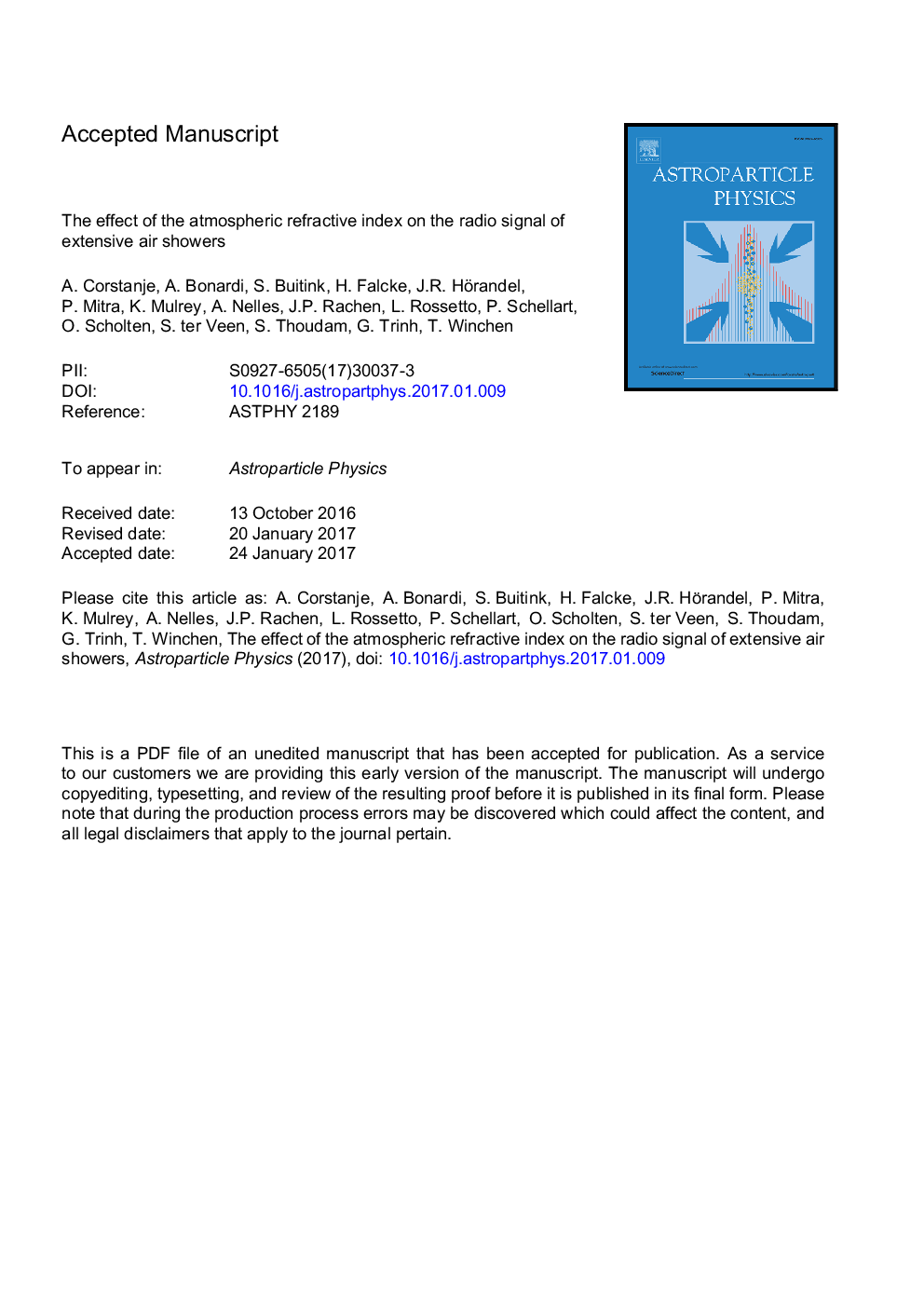| Article ID | Journal | Published Year | Pages | File Type |
|---|---|---|---|---|
| 5486752 | Astroparticle Physics | 2017 | 14 Pages |
Abstract
For the interpretation of measurements of radio emission from extensive air showers, an important systematic uncertainty arises from natural variations of the atmospheric refractive index n. At a given altitude, the refractivity N=106(nâ1) can have relative variations on the order of 10% depending on temperature, humidity, and air pressure. Typical corrections to be applied to N are about 4%. Using CoREAS simulations of radio emission from air showers, we have evaluated the effect of varying N on measurements of the depth of shower maximum Xmax. For an observation band of 30-80 MHz, a difference of 4% in refractivity gives rise to a systematic error in the inferred Xmax between 3.5 and 11âg/cm2, for proton showers with zenith angles ranging from 15 to 50°. At higher frequencies, from 120 to 250 MHz, the offset ranges from 10 to 22âg/cm2. These offsets were found to be proportional to the geometric distance to Xmax. We have compared the results to a simple model based on the Cherenkov angle. For the 120â250 MHz band, the model is in qualitative agreement with the simulations. In typical circumstances, we find a slight decrease in Xmax compared to the default refractivity treatment in CoREAS. While this is within commonly treated systematic uncertainties, accounting for it explicitly improves the accuracy of Xmax measurements.
Related Topics
Physical Sciences and Engineering
Physics and Astronomy
Astronomy and Astrophysics
Authors
A. Corstanje, A. Bonardi, S. Buitink, H. Falcke, J.R. Hörandel, P. Mitra, K. Mulrey, A. Nelles, J.P. Rachen, L. Rossetto, P. Schellart, O. Scholten, S. ter Veen, S. Thoudam, G. Trinh, T. Winchen,
